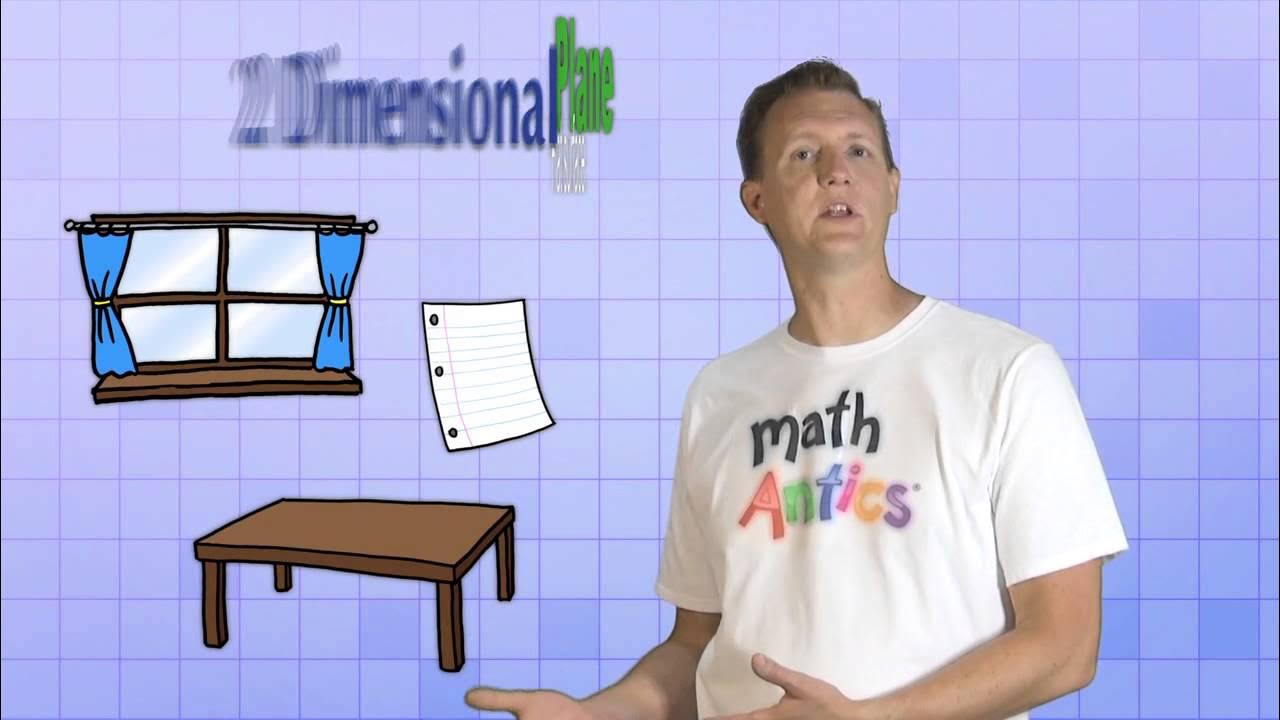GEO.1.1
Summary
TLDRThis lesson explains the basic concepts of geometry, including points, lines, and planes. It covers the definitions, properties, and methods for identifying and naming these geometric elements. Key points include understanding that a point represents a location with no size, a line is formed by connecting at least two points and has no thickness, and a plane is a flat surface extending indefinitely. The lesson also discusses collinear and non-collinear points, coplanar points, and how lines and planes intersect.
Takeaways
- 📍 A point is a location with no size or shape, denoted by a capital letter.
- 📏 A line is composed of an infinite number of points and has no thickness; it's identified by two points or a lowercase script letter.
- 🔄 The error to avoid when identifying a line is assuming only the named points exist on the line; there are infinitely more.
- 🔺 Points that lie on the same line are called collinear, while those not on the same line are non-collinear.
- 🏞 A plane is an infinite, flat surface made up of points, requiring at least three non-collinear points to define it, named by an uppercase script letter.
- 🔄 The term 'coplanar' refers to points that lie on the same plane, contrasting with 'non-coplanar' points.
- 🔼 Two intersecting lines meet at a point, while two intersecting planes meet along a line.
- 🔍 Practice involves identifying collinear points, naming lines containing specific points, and finding intersections of lines and planes.
- 📝 When naming a line, it's crucial to remember that the line extends infinitely in both directions beyond the named points.
- 📐 In diagrams, dashed lines indicate that they are not part of the plane but are shown for visual context, similar to a pencil behind a sheet of paper.
Q & A
What is a point, and how is it represented in geometry?
-A point is a location in geometry with no size or shape. It is represented by a capital letter.
How is a line formed, and what are its characteristics?
-A line is formed by connecting two points and consists of an infinite number of points. It has no thickness or width and is usually named by any two points on the line or a lowercase script letter.
What is the common misconception about points on a line?
-The common misconception is that only the two named points are on the line, but in reality, there are an infinite number of points between them.
What are collinear points?
-Collinear points are points that lie on the same line.
How do you define a plane in geometry?
-A plane is a flat surface that extends indefinitely in all directions. It is made up of at least three non-collinear points.
How can you name a plane?
-A plane can be named using any three non-collinear points on the plane or by an uppercase script letter.
What happens when two lines intersect in geometry?
-When two lines intersect, they intersect at a point.
What is the result when two planes intersect?
-When two planes intersect, they intersect at a line.
How many points are needed to define a plane, and what is the relationship between points, lines, and planes?
-At least three non-collinear points are needed to define a plane. A point represents a location, a line is formed by two points, and a plane is formed by at least three points.
What is the difference between collinear and coplanar points?
-Collinear points lie on the same line, while coplanar points lie on the same plane.
Outlines

Cette section est réservée aux utilisateurs payants. Améliorez votre compte pour accéder à cette section.
Améliorer maintenantMindmap

Cette section est réservée aux utilisateurs payants. Améliorez votre compte pour accéder à cette section.
Améliorer maintenantKeywords

Cette section est réservée aux utilisateurs payants. Améliorez votre compte pour accéder à cette section.
Améliorer maintenantHighlights

Cette section est réservée aux utilisateurs payants. Améliorez votre compte pour accéder à cette section.
Améliorer maintenantTranscripts

Cette section est réservée aux utilisateurs payants. Améliorez votre compte pour accéder à cette section.
Améliorer maintenantVoir Plus de Vidéos Connexes

1.1 - Points, Lines, and Planes

konsep datar (titik, garis, bidang, sudut, dan segi banyak)

Math Antics - Points, Lines, & Planes

Bangun Datar [Part 1] - Garis dan Sudut

Jarak garis ke garis, garis ke bidang, serta bidang ke bidang ( Dimensi Tiga )

🔥Aula de Matemática PM-AL e CBM-AL | Ângulo, Segmento de reta e Reta
5.0 / 5 (0 votes)
